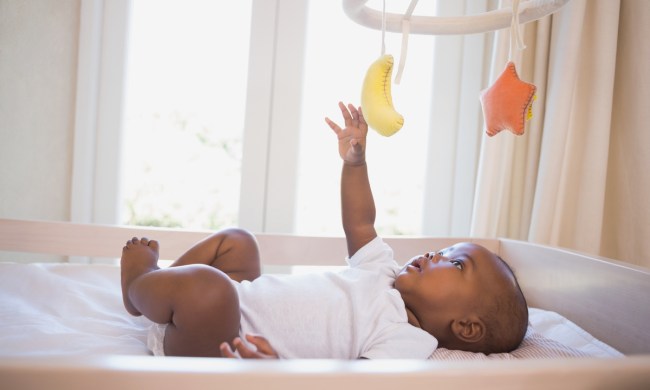After a great massage, you feel like you could sleep for days. If you want to pass that feeling onto your baby, you should give your little human massages. Yes, it’s a thing. You might think that since babies don’t do anything but be waited on hand and foot, giving them a massage seems like overkill, but think about it: This tiny person is experiencing new things every second of every day. Growing, learning, and just being alive can be stressful on a little one.
To help your baby unwind and get ready for bed, you need to stretch out your hands and rub your baby’s body right to sleep. Let’s go over how a baby massage can get the job done.

What baby massages do
- creates a stronger bond between you and baby
- soothes and calms baby
- reduces stress for baby
Research by a team at the University of Warwick says that “massage may help infants aged under six months sleep better, cry less, and be less stressed.” Wouldn’t we all be if we had daily massages? The study went on to find that the massages helped release more melatonin that created better sleeping routines for infants.
Not only will the massage calm your baby, but it will help calm you down by bringing your focus solely on your precious babe. Having that skin-to-skin contact has benefits for parent and child.
Other perks for baby
- reduces cramps and gas
- limit on nighttime waking
- wakes up happier
One study “resulted in improvements in child and mother night wakings, maternal perceptions of child sleep and mood (ie, sleep problem, bedtime ease, and morning mood), and improvements in maternal sleep quality.” When a baby is massaged before bed, the little one sleeps better, and that leads to mom sleeping better. That is something we can all get behind.
Massaging baby basics
At what age you can start giving massages
You can start giving your baby massages before you even get home from the hospital. Mom can start from the first skin to skin to help calm a newborn down from the shock of entering the world. Dad can start that first night so mom can sleep. You can’t give your hours-old newborn a deep tissue massage, but you can give a gentle caress.
How hard you can massage baby
For the first few weeks, the touch should be light. You don’t want to bruise your baby’s delicate skin. It should look more like a gentle stroke. After a couple of weeks, you can apply a little more pressure.
How often and when to massage
Massage frequency
This one can be left up to the parent. Some want to massage every night as part of the bedtime routine and others leave it to only nights when the baby is fussy.
When to massage baby
You can start the day with a little baby back rub or end the night with a destressing rub down. Before you give your baby the bedtime feed is best.
When not to massage baby
When you’ve eaten really well, you don’t want anyone to touch you. According to the Mayo Clinic, you shouldn’t massage your bundle of joy within 45 minutes of eating as this can trigger vomiting.
Read your baby’s body as you rub. If your little one looks uncomfortable — stop. Don’t rub if your child isn’t enjoying it, as this can make your baby more irritated and that will lead to a bad night’s sleep. Not everyone likes to be touched and not every baby wants a backrub.

How to massage your babe
- Do it in a quiet, warm, calm room.
- Start with a light touch.
- Start with one body part and work your way around.
- Don’t massage distracted.
- Pay attention to how baby reacts.
Think about how you would want a massage before bed. You don’t want music blaring, bright lights in your eyes, and a freezing room. Set the mood for how you would want to be massaged to sleep.
Even if your baby likes more pressure, you want to start with a lighter touch. Start gently to see how your baby responds and then you can adjust your pressure from there. Plus, maybe your child likes more pressure on the feet but less on the arms.
One important thing is to not get distracted. Stay off your phone and don’t watch your favorite show. You run the risk of rubbing the same spot for too long, bruising the skin, and making your child unhappy. It should be calming for both of you, but you have to be present to get that benefit.
Can you use oils?
Yes, you can if you want to. You can use lavender baby lotion or your choice of certain oils. Just make sure the oil is safe for your little one, and only use essential oils on babies over three months old.
If your tiny tot just won’t go down to bed easily or wakes up more than you’d like during the night, add a baby massage to the end-of-day routine. It might take a bit to figure out your baby’s preferences on pressure and where touch is preferred. But once you find that rhythm that benefits you and your baby, both of you will enjoy massage time.



